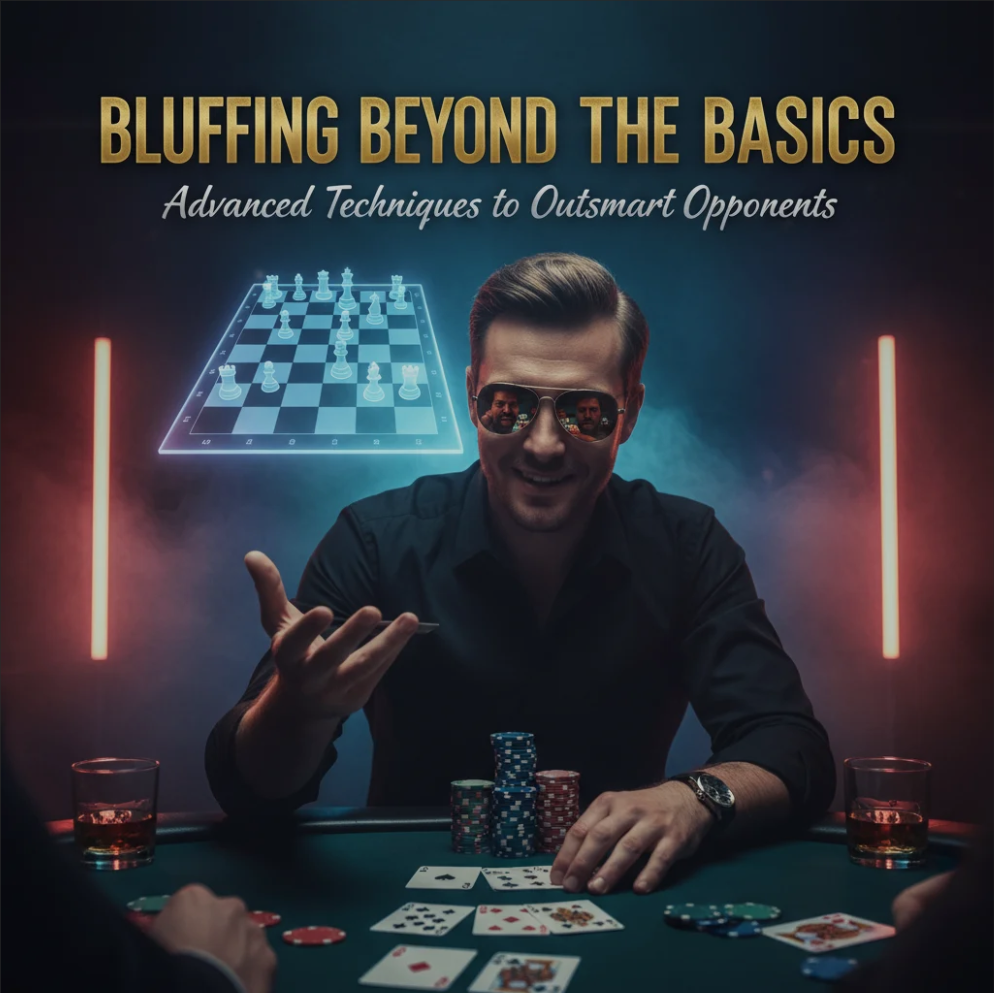Bluffing Beyond the Basics: Advanced Techniques to Outsmart Opponents
Bluffing is more than just pretending to have a strong hand — it’s an art form that separates good poker players from great ones. Once you’ve mastered the basics, it’s time to explore advanced bluffing techniques that can give you a strategic edge at the table.
Whether you play online or in a live casino, understanding the psychology, timing, and subtle nuances of bluffing is crucial for consistently outsmarting opponents.
🔍 1. Reading Opponents Like a Pro
Advanced bluffing begins with observing your opponents carefully.
Notice patterns in their betting, body language, and reactions.
- Identify players who fold too easily — ideal targets for bluffs
- Detect opponents who call frequently — avoid bluffing against them
- Track their emotional state — nervous or confident players respond differently
Bluffing successfully requires tailoring your strategy to the unique tendencies of each player.
Image Alt Text: Poker player studying opponents at a casino table, planning a strategic bluff.
⏱️ 2. Timing Is Everything
Even a perfect bluff fails if mistimed.
Advanced players know when to act:
- Bluff early in a hand when uncertainty is high
- Use late-position bluffs to control the betting flow
- Mix in occasional bluffs to remain unpredictable
Remember, consistency in your bluffing patterns can backfire. Mix timing and frequency for maximum effect.
🧠 3. The Semi-Bluff: Turning Weak Hands into Opportunities
A semi-bluff occurs when you bet or raise with a hand that may improve later.
- If your opponent folds, you win immediately
- If called, you still have a chance to hit your draw
- Keeps your table image dynamic and unpredictable
Semi-bluffs combine aggression and probability to create pressure, forcing opponents into tough decisions.
🔗 4. Table Image and Perception Control
Your table image — how opponents perceive you — is critical.
- A tight, conservative image allows for more successful bluffs
- An aggressive image makes some bluffs less credible
- Subtle adjustments to your image enhance the effectiveness of advanced techniques
Manipulating perception keeps opponents guessing, making it easier to take advantage of their assumptions.
💡 5. Combining Psychology and Betting Patterns
Advanced bluffing is a psychological game.
Use your betting patterns to tell a story:
- Slow-play strong hands to lure opponents in
- Aggressive betting to represent a monster hand
- Alter your bet sizes to create tension and uncertainty
By combining psychology, timing, and observation, you can make even mediocre hands appear formidable.
🌟 6. Avoiding Common Bluffing Mistakes
Even seasoned players slip up. Avoid:
- Bluffing too often — makes you predictable
- Targeting the wrong opponent — some players never fold
- Forgetting table dynamics — position and stack size matter
- Ignoring tells — both yours and your opponents’
Refining your approach ensures bluffs remain strategic tools, not reckless risks.
🎯 Conclusion: Elevate Your Game with Advanced Bluffing
Bluffing beyond the basics requires practice, observation, and strategic thinking. By mastering timing, reading opponents, table image, and semi-bluffs, you can consistently outsmart opponents and gain a significant edge in poker.
Remember, bluffing is both art and science — and the players who combine both often dominate the table.
